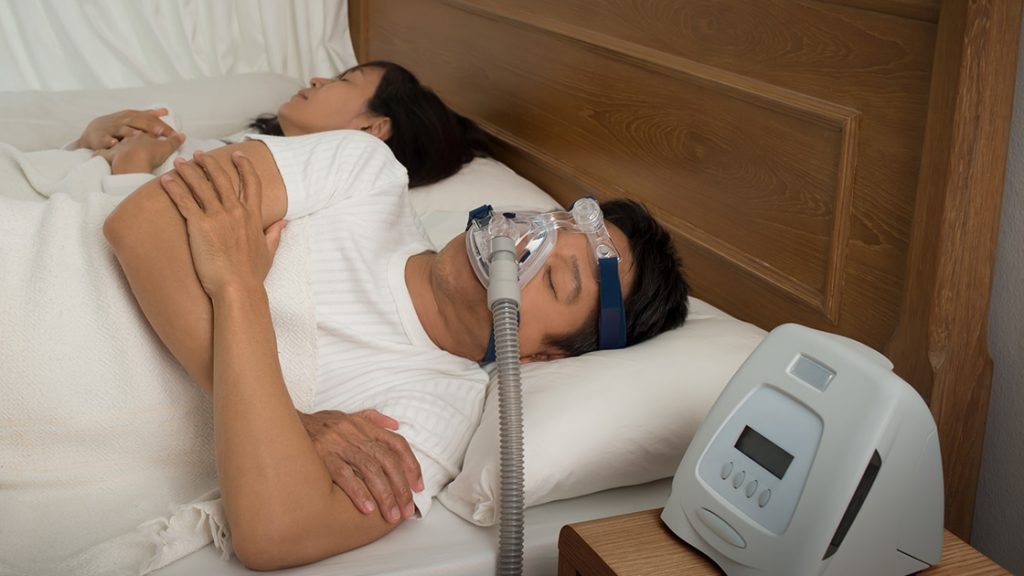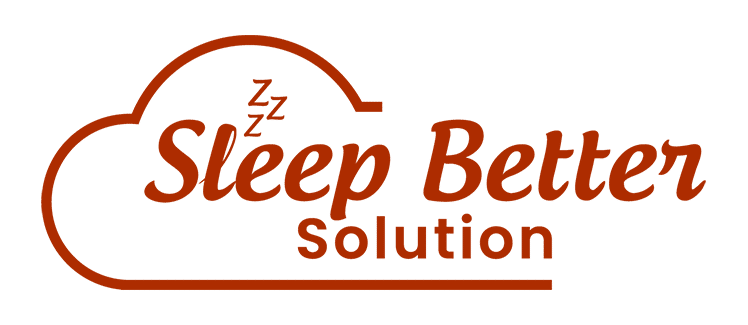
CPAP Supplies Near Me Lodi NJ
Receiving a sleep apnea diagnosis often brings tremendous relief. The fatigue, morning headaches, and your partner’s complaints about loud snoring finally have an explanation. However, this relief quickly gives way to a new challenge: navigating the world of CPAP therapy and finding the right supplies to make your treatment effective and comfortable.
Consistent and successful CPAP therapy depends on more than just having a machine. High-quality, properly-fitting equipment that is well-maintained forms the foundation of effective treatment. The mask that seals perfectly, the humidifier that prevents dryness, and the filters that keep your air clean all play crucial roles in ensuring you get the restorative sleep your body needs.
For residents of Lodi NJ, and surrounding areas, finding a reliable local source for CPAP supplies can make the difference between struggling with therapy and embracing it as part of a healthier lifestyle. This comprehensive guide will help you understand your CPAP prescription, select the right equipment, maintain your supplies for optimal performance, and explore alternative treatment options when CPAP isn’t the perfect fit.
Understanding Your CPAP Prescription and What it Means
Decoding Your Pressure Settings
Your CPAP prescription includes a pressure setting measured in centimeters of water pressure (cm H2O). This number represents the exact amount of air pressure your machine will deliver to keep your airways open throughout the night. Your sleep study results determine this precise calibration, which typically ranges from 4 to 20 cm H2O.
The Importance of Adherence
Using your CPAP machine every night as prescribed is essential for preventing the serious health consequences associated with untreated sleep apnea. Research demonstrates that consistent CPAP use reduces the risk of cardiovascular disease, stroke, diabetes complications, and cognitive decline. Most insurance providers and medical professionals define adherence as using your CPAP machine for at least four hours per night, at least 70% of the time.
Initial Acclimation Period
Adjusting to CPAP therapy requires patience and realistic expectations. Most patients experience an acclimation period of two to four weeks as they become comfortable with wearing a mask and breathing against positive pressure. During this time, you might experience minor side effects such as nasal congestion, dry mouth, or feelings of claustrophobia.
A Guide to CPAP Masks: Finding Your Perfect Fit
Full-Face Masks
Full-face masks cover both the nose and mouth, making them ideal for patients who breathe through their mouth during sleep or experience nasal congestion. These masks feature a larger cushion that creates a seal around the entire lower face, ensuring effective therapy delivery even when nasal passages are blocked.
Nasal Masks and Nasal Pillow Masks
Nasal masks cover only the nose and are often preferred by patients who can breathe comfortably through their nose during sleep. These masks work well with higher pressure settings and provide a secure seal with less facial coverage than full-face options. Nasal pillow masks represent the most minimalist approach, using small cushions that rest just inside the nostrils.
Factors in Mask Selection
Choosing the right mask involves considering your sleeping position, facial structure, and skin sensitivity. Side sleepers often prefer nasal pillow masks that don’t interfere with pillows, while back sleepers may find full-face masks more comfortable. Patients with facial hair may need specialized masks designed to seal effectively around beards or mustaches.
The Heart of the System: Understanding Your CPAP Machine
Standard CPAP Machines
Standard CPAP machines deliver a single, continuous pressure throughout the night as prescribed by your sleep physician. These devices maintain consistent airway pressure regardless of your breathing patterns or sleep stages, providing reliable therapy based on your sleep study results. Standard CPAP machines are typically the most affordable option and work effectively for most patients with straightforward sleep apnea.
APAP (Automatic Positive Airway Pressure) Machines
APAP devices automatically adjust pressure based on your real-time breathing patterns throughout the night. These intelligent machines can detect changes in airway resistance and modify the pressure delivery to provide the minimum effective pressure at any given moment. This automatic adjustment feature enhances comfort by reducing pressure during periods when lower pressure is sufficient, while ensuring adequate pressure delivery when your airways need more support.
BiPAP (Bilevel Positive Airway Pressure) Machines
BiPAP machines provide two distinct pressure settings: a higher pressure during inhalation (IPAP) and a lower pressure during exhalation (EPAP). This dual-pressure approach makes breathing feel more natural and is often prescribed for patients who have difficulty tolerating standard CPAP therapy or who have specific respiratory conditions. BiPAP therapy is typically recommended for patients with central sleep apnea, complex sleep apnea, or those who require very high pressures.
Essential CPAP Accessories and Their Functions
Humidifiers and Heated Tubing
Humidification systems prevent dryness and irritation in your nasal passages and throat by adding moisture to the pressurized air. Most modern CPAP machines include integrated heated humidifiers that allow you to adjust moisture levels based on your comfort needs and environmental conditions. Heated tubing works in conjunction with humidifiers to maintain consistent temperature and humidity levels throughout the air delivery system.
Filters: Your First Line of Defense
CPAP filters clean the air entering your machine and protect the internal motor from dust and debris. Disposable filters require regular replacement, typically every one to three months depending on your environment and usage patterns. Reusable filters can be washed and reused but still need periodic replacement. Ultra-fine filters provide additional protection against allergens and smaller particles, which can be particularly beneficial for patients with allergies or respiratory sensitivities.
Mask Liners, Cushions, and Headgear
Mask cushions create the seal between your face and the mask, making proper fit and regular replacement essential for effective therapy. Most cushions should be replaced monthly to maintain optimal seal integrity and hygiene.
The Importance of a Consistent Cleaning and Replacement Schedule
Daily and Weekly Cleaning Protocols
Daily cleaning involves washing your mask cushion and nasal pillows with warm soapy water, rinsing thoroughly, and allowing them to air dry. Weekly cleaning should include the mask frame, headgear, and tubing. The humidifier chamber requires daily emptying and weekly cleaning with a vinegar solution to prevent mineral buildup. Proper cleaning prevents bacterial growth, maintains equipment function, and ensures the longevity of your supplies.
Standard Replacement Timelines
Insurance companies and manufacturers provide specific guidelines for equipment replacement schedules. Masks typically need replacement every three to six months, while cushions and nasal pillows require monthly replacement. Filters should be changed according to manufacturer recommendations, usually every one to three months. Tubing generally lasts six months, while headgear straps may need replacement every six months to one year depending on wear patterns.
The Risks of Using Worn-Out Supplies
Using equipment beyond its recommended replacement timeline can lead to air leaks that compromise therapy pressure and effectiveness. Old cushions lose their ability to create proper seals, while worn filters become less effective at cleaning incoming air. Bacteria and other microorganisms can accumulate in old equipment, potentially causing respiratory infections or other health complications.
Troubleshooting Common CPAP Therapy Issues

Addressing Mask Leaks
Mask leaks are among the most common CPAP therapy challenges and can often be resolved through proper fitting adjustments. Start by ensuring your mask is the correct size and that headgear straps are appropriately tightened—snug enough to create a seal but not so tight as to cause discomfort. If leaks persist, check your mask cushion for wear, cracks, or distortion that might prevent proper sealing.
Managing Dry Mouth and Nasal Congestion
Dry mouth often indicates mouth breathing during sleep, which can be addressed by adjusting humidifier settings, using a chin strap to encourage nasal breathing, or switching to a full-face mask that accommodates mouth breathing. Nasal congestion can be managed through optimal humidification settings, saline nasal rinses before bed, or consultation with your physician about underlying causes such as allergies or sinus issues.
Overcoming Claustrophobia and Discomfort
Gradual acclimation techniques can help overcome feelings of claustrophobia or discomfort. Start by wearing your mask for short periods while awake and relaxed, gradually increasing the time as you become more comfortable. Relaxation techniques, such as deep breathing exercises or meditation, can help reduce anxiety associated with wearing the mask.
Navigating Insurance Coverage for Your CPAP Supplies
Understanding Your Benefits
Most health insurance plans cover CPAP equipment and supplies as durable medical equipment (DME) under specific guidelines. Review your insurance policy to understand coverage limits, copayment requirements, and any restrictions on supplier networks or brands. Coverage typically includes the CPAP machine, mask, tubing, filters, and other essential supplies, but may have specific replacement schedules and quantity limits.
The Concept of Compliance
Insurance providers require proof of consistent CPAP use before covering ongoing supply costs. Compliance data from your machine demonstrates that you are using the therapy as prescribed, typically defined as at least four hours per night for 70% of nights within a 30-day period. Your CPAP machine automatically records usage data, which your supplier or physician can download and submit to your insurance company.
Working with In-Network vs. Out-of-Network Suppliers
Choosing an in-network DME supplier typically results in lower out-of-pocket costs and streamlined billing processes. In-network suppliers have established relationships with your insurance company and understand coverage requirements and limitations. Out-of-network may offer different products or services but often result in higher costs and more complex billing procedures.
Exploring Alternatives: When CPAP Isn’t the Right Fit
Oral Appliance Therapy (OAT): A Comfortable Alternative
Custom-fitted oral appliances represent a highly effective, non-invasive treatment option for mild to moderate obstructive sleep apnea. These precision-crafted devices work by gently repositioning the lower jaw and tongue to maintain an open airway during sleep. Oral appliances offer significant advantages for patients who struggle with CPAP therapy, including greater comfort, easier travel, and no need for electricity or external equipment.
The Role of a Dental Sleep Medicine Specialist
Qualified dental sleep medicine specialists collaborate closely with sleep physicians to design and fit precise oral appliances tailored to each patient’s unique anatomy and sleep apnea severity. This collaborative approach ensures optimal treatment outcomes and proper medical oversight.
Lifestyle Modifications as Supportive Treatment
Weight management can significantly impact sleep apnea severity, as excess weight contributes to airway obstruction. Even modest weight loss can improve symptoms and may allow for reduced CPAP pressures or successful treatment with oral appliances. Positional therapy helps patients who experience sleep apnea primarily when sleeping on their back.
The Power of Advanced Technology in Sleep Treatment
At-Home Sleep Screening
Modern, FDA-cleared screening tools like wearable rings provide convenient initial data on sleep quality and breathing disruptions. These devices offer valuable insights into sleep patterns and can help identify potential sleep disorders before formal sleep studies. At-home screening technology makes initial assessment more accessible and comfortable for patients who prefer to sleep in their own environment.
Precision with 3D Digital Scanning
Advanced technology like the iTero 3D scanner allows for the creation of exceptionally accurate and comfortable custom oral appliances without messy traditional impressions. This digital approach ensures precise fit and optimal therapeutic effectiveness. 3D scanning technology eliminates patient discomfort associated with impression materials while providing superior accuracy for appliance fabrication.
Innovations in Oral Appliance Design
Manufacturers like Prosomnus use advanced engineering and materials to create low-profile, effective, and patient-friendly devices. These innovations focus on maximizing therapeutic effectiveness while minimizing bulk and discomfort. Modern oral appliances incorporate features such as adjustable advancement mechanisms, comfortable materials, and streamlined designs that make treatment more acceptable and effective for a broader range of patients.
Finding a Trusted Partner for Your Sleep Health Journey
The Importance of Professional Guidance
Working with a knowledgeable team that can answer questions about therapy options, supply needs, and alternative treatments ensures you receive appropriate care tailored to your specific situation. Professional guidance helps navigate the complexities of sleep apnea treatment and equipment management. Experienced providers understand the nuances of different treatment approaches and can help you make informed decisions about your care.
Look for Comprehensive Patient Education
Choose providers who prioritize educating patients about their condition and all available treatment options. Educated patients are empowered to make better decisions about their care and are more likely to achieve successful treatment outcomes. Comprehensive education includes understanding your sleep study results, treatment options, equipment care, and lifestyle factors that impact sleep quality.
Coordinated Care for Better Outcomes
A clinical team that ensures seamless communication and collaboration between sleep physicians, dentists, and patients provides the most effective approach to sleep apnea treatment. This coordinated care model addresses all aspects of your condition and ensures optimal treatment outcomes. Coordinated care also means better follow-up, more comprehensive treatment planning, and improved patient satisfaction throughout the treatment process.
Sleep Better Solution: A Local Ally in CPAP Care
Managing sleep apnea isn’t just about having a CPAP machine—it’s about making sure every part of your therapy works smoothly, night after night. That’s where Sleep Better Solution in Lodi NJ comes in.

Wide Selection of High-Quality CPAP Supplies
From masks and tubing to filters and cleaning accessories, Sleep Better Solution offers everything you need to keep your CPAP therapy running effectively. Whether you’re new to CPAP or need a quick replacement, their wide range of supplies ensures you’ll always find the right fit for your comfort and lifestyle.
Patient-First Service with Honest, Expert Recommendations
Choosing the right CPAP equipment can feel overwhelming, but you don’t have to do it alone. Their experienced team takes the time to listen, explain options in simple terms, and guide you toward the best choices—without pressure or unnecessary upsells. Their goal is always your comfort, not just a sale.
Ongoing Support for Long-Term Success
CPAP therapy is a journey, and ongoing support makes all the difference. Sleep Better Solution stays with you beyond your first purchase, offering follow-ups, troubleshooting help, and expert advice to keep your therapy effective. With them by your side, you can feel confident that better sleep is within reach.
Your Path to Better Sleep Starts with the Right Support
Successfully managing sleep apnea requires more than just having the right equipment—it demands ongoing support, education, and access to quality supplies and alternative treatment options. Properly selected and maintained CPAP supplies form the foundation of effective therapy, while modern alternatives like oral appliances provide viable options when CPAP isn’t the perfect fit.
The journey to better sleep is achievable with the right information, appropriate tools, and professional support. Understanding your equipment, maintaining proper care schedules, and working with experienced providers ensures you can overcome the challenges of sleep apnea and enjoy the restorative sleep your body needs.
Take control of your sleep health by contacting a qualified sleep health professional to discuss your CPAP supply needs or explore whether alternative treatments, such as oral appliance therapy, might be a suitable option for your specific situation. Better sleep and better health are within reach with the right support and treatment approach.
